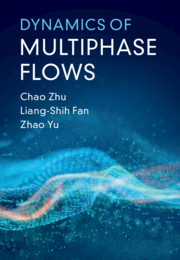Book contents
- Frontmatter
- Dedication
- Contents
- Preface
- Part I Principles
- 1 Introduction to Multiphase Flows
- 2 Continuum Modeling of Single-Phase Flows
- 3 Transport of Isolated Objects: Solid Particles, Droplets, and Bubbles
- 4 Interactions of Particles, Droplets, and Bubbles
- 5 Continuum-Discrete Tracking Modeling of Multiphase Flows
- 6 Continuum Modeling of Multiphase Flows
- 7 Numerical Modeling and Simulation
- 8 Measurement Techniques
- Part II Application-Based Analysis of Multiphase Flows
- Index
3 - Transport of Isolated Objects: Solid Particles, Droplets, and Bubbles
from Part I - Principles
Published online by Cambridge University Press: 10 September 2021
- Frontmatter
- Dedication
- Contents
- Preface
- Part I Principles
- 1 Introduction to Multiphase Flows
- 2 Continuum Modeling of Single-Phase Flows
- 3 Transport of Isolated Objects: Solid Particles, Droplets, and Bubbles
- 4 Interactions of Particles, Droplets, and Bubbles
- 5 Continuum-Discrete Tracking Modeling of Multiphase Flows
- 6 Continuum Modeling of Multiphase Flows
- 7 Numerical Modeling and Simulation
- 8 Measurement Techniques
- Part II Application-Based Analysis of Multiphase Flows
- Index
Summary
Chapter 3 provides basic formulation of various fluid–particle interactions of an isolated object that has a relative motion in a fluid flow and in the absence of any interactions with other transported objects in the same fluid flow. The chapter describes the distinctly different transport mechanisms governing the fluid–particle interactions, their basic mathematical formula, and the corresponding ranges of validation. The most essential interactions are represented by the drag force, carried mass, Basset force, Saffman force, Magnus force, Stefan flux, and d2-law of diffusive evaporation. The most essential formulation of these fluid–particle interactions is derived with the Newtonian fluid flowing over a rigid sphere and under the creeping flow conditions. This approximated method leads to the basic formulation of the Lagrangian modeling approach for the discrete phase transport in a multiphase flow. Application of the fluid–particle interactions for the transport of isolated objects in a carrying fluid flow are illustrated.The usefulness of the order-of-magnitude analysis of the transport mechanisms in modeling simplification also is discussed.
Keywords
- Type
- Chapter
- Information
- Dynamics of Multiphase Flows , pp. 81 - 125Publisher: Cambridge University PressPrint publication year: 2021

